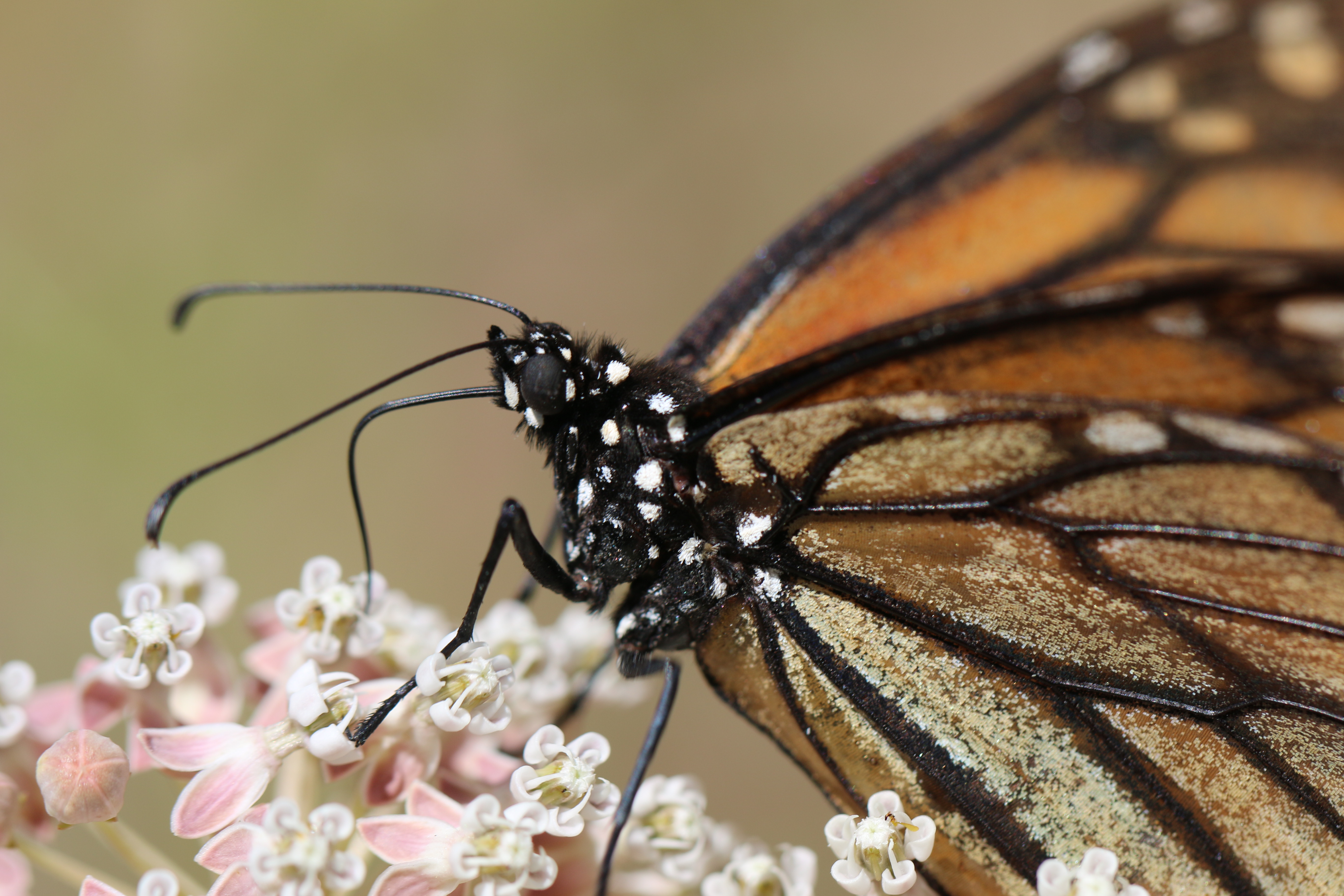These specially designed kits, geared towards large-scale projects, incorporate native milkweeds, nectar plants, and climate considerations.
As we learned last winter, the western monarch population has plummeted from over 4 million individuals in the 1980s to less than 30,000 individuals. In response to this drastic decline, the Xerces Society created the Western Monarch Call to Action, launched in January 2019. One of the key actions that individuals and organizations can take is to restore monarch breeding and migratory habitat in California. While we encourage everyone to help with this effort, we decided as an organization to focus our efforts on working with partners who are already interested in—and have experience with—habitat restoration work. This decision led to us piloting a new program to provide Monarch and Pollinator Habitat Kits to partners doing restoration work.

Our longtime partner Hedgerow Farms worked with us to develop the kits, which are designed to be used in large-scale projects. Each kit contains 1600 transplants, half of which are native milkweeds (monarch larval host plants). The other half consists of nectar plants that can support adult monarchs and other native pollinators. The selection of nectar plants was informed by the contributions of community scientists through the Western Monarch Milkweed Mapper; their observations have expanded our list of known nectar plants for western monarchs! Nectar plants included in the kits include California aster (Symphyotrichum chilense), California goldenrod (Solidago velutina ssp. californica), and Vervain (Verbena lasiostachys).
These kits also further our goal of incorporating considerations of climate change into our restoration work by restoring habitat and increasing habitat connectivity. In California, drought will become more frequent and more intense. Using a variety of native, drought-tolerant plants like those included in our kits in restoration work will help these habitats to provide important resources for pollinators—even under stressful conditions.
With funding from the Wildlife Conservation Society Climate Adaptation Fund and Xerces Society members, we were able to provide 32 kits to partners in 20 counties in California. Many of our kits went to people working with one of California’s Resource Conservation Districts (RCDs), while others went to national wildlife refuges, demonstration gardens, and local conservation groups. Many of the kit recipients have outreach activities planned that will help spread the word about ways to support monarch and pollinator conservation in California. It was inspiring to read the kit applications and see how many dedicated people there are, doing important conservation work in California. I wish we could have funded all the projects for which we received applications. These dedicated people will help to restore many acres of climate-smart habitat in California.
All of the kits were delivered or picked up by mid-November—and now that rain has returned to much of the state, planting has begun! One of the first organizations to plant their kit—and one of the first to update us on their progress—was the California Native Plant Society in Los Angeles County, who have been working hard to help restore the Sepulveda Basin Wildlife Reserve. Their kit was planted in an area where they have focused on the removal of invasive plants.
While kit recipients are busy getting plants in the ground, our Western Monarch Thanksgiving Count volunteers are fanned out across the coast counting overwintering monarchs. The Thanksgiving count ran from November 16 through December 8; the New Year's count will run from December 28 through January 12, 2020. Thanksgiving totals will be announced in January. Curious what we're seeing this season? New this year, we have added real-time count data for a few select sites—which is informed by, and thanks to, the efforts of our awesome volunteers!
I have really enjoyed working on this project, and I look forward to seeing its long-term impacts. We’re also happy to announce that we’re going to be able to offer Monarch and Pollinator Habitat Kits in California again next year! We look forward to working with more Californians dedicated to monarch and pollinator conservation—and we’re also considering ways to expand this program to other parts of the U.S.
Further Reading
Find out how you can help: Western Monarch Call to Action.
Learn more about the Xerces Society's endangered species program and pollinator conservation program.




